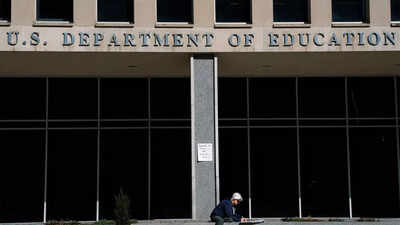US Department of Education layoffs threaten dozens of student programmes: Here’s which ones are at risk

As the United States faces another government shutdown, the Department of Education has sent layoff notices to more than 460 staff members across six of its 17 primary offices. The reductions target staff responsible for administering critical grant programmes, including Title I for low-income students and the Individuals with Disabilities Education Act (IDEA) grant programmes. The scale of these cuts has prompted concern among former and current staffers, lawmakers, and education advocates, who warn that the department’s capacity to manage grants, respond to queries, monitor compliance, and collect programme data could be severely compromised.
A halt in proceedings
On 15 October, 2025, a federal judge temporarily blocked the layoff plan, allowing time for a case challenging the shutdown-era staff reductions to proceed. The Trump administration has indicated its intent to continue pursuing the reductions, with the original plan stipulating that affected employees’ last day would be 9 December, 2025. Uncertainty remains over whether staff would be reinstated if the shutdown ends before that date or if some programmes would be transferred to other agencies instead.Education Secretary Linda McMahon defended the layoffs, describing the department as “unnecessary” and asserting that future funding would not be affected. Critics, however, point to a potential loophole: by leaving almost no one to manage the department’s key programmes, the administration could effectively wind them down before Congress has an opportunity to act.
Tracking the impact on programmes
Drawing from Education Week’s analysis of publicly available information, more than 40 grant programmes, collectively worth over US$50 billion annually, are at risk. These programmes support both K-12 and higher education, spanning a range of federal offices and sub-offices. Several of the offices affected do not administer grants, such as the Office for Civil Rights, but the majority of cuts target offices that directly manage funding for students.Office of Elementary and Secondary EducationAt least 132 staff members face layoffs in this office, which oversees most of the department’s K-12 grant programmes. Among the divisions affected are:
- Office of Discretionary Grants and Support Services
- Office of Innovation and Early Learning Programmes
- School and Community Improvement Programmes
- Well-Rounded Education Programmes
- Office of Formula Grants
- Office of Rural, Insular and Native Achievement Programmes
- Office of Safe, Supportive Schools
- School Support and Accountability
- Office of Migrant Education
- Office of Indian Education
Office of Special Education and Rehabilitation ServicesAt least 121 staff members are slated for layoffs in programmes supporting children with disabilities and disability services for all ages. These include:
- Office of Special Education Programs
- Rehabilitation Services
Office of Postsecondary EducationThis office, responsible for the majority of higher education grant programmes, faces at least 64 staff reductions. Programmes at risk include:
- Office of Student Services
- Strengthening Historically Black Colleges and Universities Division (Title III, Parts B, E, and F)
- Strengthening Institutions Division (Title III, Parts B and F)
- Hispanic-Serving Institutions Division (Title V and Title III, Part F)
- Fund for the Improvement of Postsecondary Education (FIPSE)
- Institutional Programs Development Division
Implications for students and policymakers
The layoffs illustrate how administrative capacity is directly tied to the continuity of student support. Education Week reports that the reductions could delay disbursement of grant funds, disrupt technical assistance for grantees, and hamper compliance monitoring. In some cases, the Trump administration’s proposed fiscal year 2026 budget seeks to collapse individual programmes into broader funding categories, potentially reducing overall support for students.The developments raise broader questions about the role of the Department of Education and the extent to which staffing decisions can influence the longevity and effectiveness of federal education programmes. For policymakers, educators, and families, the coming months will test how institutional knowledge, federal oversight, and programme continuity can be preserved amid political and operational upheaval.





